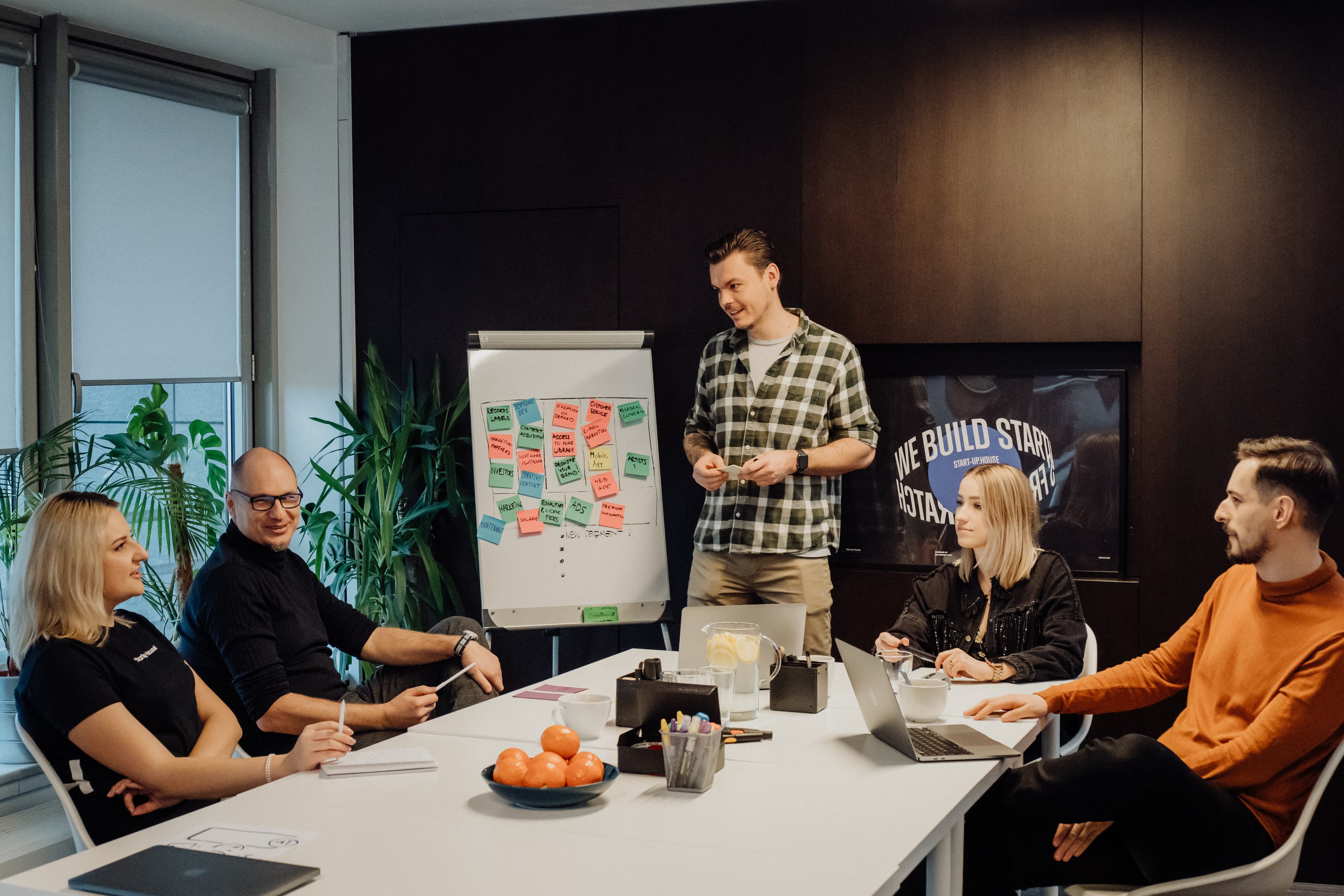What is PoC in Software Development? A Comprehensive Guide for Business Leaders

Alexander Stasiak
Jun 12, 2024・7 min read
Table of Content
Understanding PoC in Software Development
Defining Proof of Concept (PoC)
Importance for Business Leaders
Differentiating PoC from MVP
Steps to a Successful PoC
Initial Idea and Research
Developing the PoC Prototype
Gathering User Feedback
Summary
FAQs
Understanding the concept of Proof of Concept (PoC) is crucial for business leaders aiming to innovate and grow. 🌟 But what is PoC in software development, and why does it matter to your company? Essentially, a PoC is a preliminary step that helps determine the technical feasibility and market demand for a new software idea before full-scale development begins. For companies striving to enhance productivity and gain a competitive edge, mastering the PoC process can be a game-changer. In this guide, we will delve into the importance of PoC in software development, exploring how it can mitigate risks, gather valuable feedback, and pave the way for successful product launches. 🚀 Let's dive in and discover how a well-executed PoC can transform your business vision into reality.
Understanding PoC in Software Development
Defining Proof of Concept (PoC)
Proof of Concept (PoC) in software development is a critical preliminary step to validate the feasibility of a software idea. Essentially, it helps determine whether a proposed concept is technically viable and worth pursuing further. A PoC focuses on testing the core functionality of the application, often with limited features, to see if it can solve real-life problems effectively. This process involves creating a basic prototype that addresses the main pain points and business requirements. By doing so, it allows companies to gather valuable data and feedback from potential users early in the development process. This initial stage is crucial as it helps mitigate risks, refine the software idea, and ensure that the final product meets the market needs and expectations.
Importance for Business Leaders
For business leaders, understanding the importance of a Proof of Concept (PoC) in software development cannot be overstated. A PoC serves as an invaluable tool for evaluating the technical feasibility of a software idea before committing significant resources to full-scale development.
Mitigate Risks: A PoC helps identify potential technical and market challenges early on.
Investor Confidence: Provides data needed to convince potential investors of the project's viability.
User Feedback: Gathers early user feedback to refine the product and ensure market fit.
This proactive approach not only saves time and money but also helps in making informed decisions that can drive the company toward successful product launches and long-term growth.
Differentiating PoC from MVP
It's crucial to differentiate between a Proof of Concept (PoC) and a Minimum Viable Product (MVP) in the software development process. While both are essential stages, they serve different purposes.
PoC: Tests the technical feasibility of a software idea at the very beginning. Focuses on verifying whether the core functionalities can be implemented using the intended technology.
MVP: A more advanced stage where a basic version of the product is developed with enough features to satisfy early users and gather feedback. It is user-facing and designed to validate market demand and usability.
Understanding these distinctions helps business leaders make strategic decisions about resource allocation and project timelines, ensuring each phase effectively contributes to the overall product development lifecycle.
Steps to a Successful PoC
Initial Idea and Research
The journey to a successful Proof of Concept (PoC) begins with a well-defined initial idea and thorough research. At this stage, it's essential to articulate the core problem your software idea aims to solve and identify the specific business requirements it must meet.
Stakeholder Engagement: Engage with stakeholders, project managers, and potential customers to gather valuable insights and feedback.
Market Research: Conduct extensive research to understand market needs, target demographics, and existing solutions.
By thoroughly understanding the problem and the market landscape, you can create a solid foundation for your PoC, increasing its chances of success. This initial research phase guides the development process and helps in making informed decisions throughout the project lifecycle.
Developing the PoC Prototype
After laying the groundwork with a strong initial idea and thorough research, the next step is developing the PoC prototype. This involves creating a basic version of the software that focuses on implementing its core functionalities.
Collaboration: Work closely with your software development team to outline technical specifications and minimal features.
Simplicity: Keep the prototype simple, addressing only the main pain points identified during the research phase.
By building a functional PoC prototype, you can gather valuable feedback from stakeholders and potential users, which will guide further development and refinement of the final product.
Gathering User Feedback
Once you have developed the PoC prototype, the next critical step is gathering user feedback. This involves presenting the prototype to a select group of potential users, stakeholders, or focus groups to evaluate its functionality and usability.
User Interaction: Encourage users to interact with the prototype and provide honest feedback on their experience.
Comprehensive Evaluation: Conduct interviews, surveys, and usability tests to gain a complete understanding of user expectations and preferences.
Incorporating this feedback into the development process helps refine the product idea and ensure that the final software solution aligns with market demands and user needs, paving the way for a successful product launch.
Summary
Understanding Proof of Concept (PoC) in software development is essential for business leaders. A PoC helps validate the feasibility and market demand for new software ideas, mitigating risks and gathering valuable feedback. Learn how a well-executed PoC can transform your business vision into reality.
FAQs
What is a Proof of Concept (PoC) in software development? A PoC is a preliminary step to validate the feasibility and market demand of a software idea before full-scale development.
Why is PoC important for business leaders? A PoC helps mitigate risks, gather user feedback, and validate core functionalities, ensuring the project aligns with business objectives.
How does PoC differ from an MVP? A PoC tests technical feasibility early on, while an MVP is a basic product version designed to validate market demand and usability.
What are the initial steps in developing a PoC? Start with a well-defined idea, conduct thorough research, and engage stakeholders to gather insights and feedback.
How do you develop a PoC prototype? Collaborate with your development team to outline technical specifications and build a simple prototype focusing on core functionalities.
How is user feedback gathered for a PoC? Present the prototype to potential users, conduct interviews, surveys, and usability tests to collect feedback.
What are the benefits of conducting a PoC? A PoC helps identify technical and market challenges early, saving time and resources in the long run.
Can a PoC attract investors? Yes, a successful PoC provides data and proof of feasibility that can boost investor confidence.
How does a PoC mitigate risks? By identifying potential issues early, a PoC allows you to address them before committing significant resources to full-scale development.
What is the role of a development team in a PoC? The development team outlines technical specifications and builds the prototype, ensuring it meets the core requirements.
How does market research contribute to a PoC? Market research helps understand user needs and preferences, guiding the development of a relevant and valuable software solution.
How long does it take to develop a PoC? The timeline varies depending on the complexity of the project, but it typically takes a few weeks to a few months.
What are the key elements of a successful PoC? A clear problem definition, thorough research, stakeholder engagement, and a functional prototype.
How does a PoC improve the final product? Feedback from the PoC phase helps refine the software, ensuring it meets user needs and market demands.
What technologies are commonly used in PoC development? Various technologies and frameworks can be used, depending on the project requirements and goals.
How do you measure the success of a PoC? Success is measured by how well the prototype addresses the core problem, user feedback, and technical feasibility.
Can a PoC be used for non-software projects? Yes, the concept of PoC can be applied to various fields to test the feasibility of new ideas and concepts.
What are common challenges in PoC development? Challenges include defining clear objectives, gathering accurate feedback, and managing limited resources.
How does a PoC help in product development? A PoC provides a foundation for the development process, helping to shape the final product based on real-world feedback and testing.
Why should startups consider developing a PoC? Startups can benefit from a PoC by validating their ideas, attracting investors, and refining their product before a full-scale launch.
Digital Transformation Strategy for Siemens Finance
Cloud-based platform for Siemens Financial Services in Poland


You may also like...

Financial services software development
Building software for financial services is no small feat. From strict compliance rules to data security and scalability, every stage matters.
Alexander Stasiak
Nov 04, 2025・12 min read

Top Traits of an Outstanding Software Development Team
The success of any software project depends on the team. See the top traits that turn good dev teams into outstanding ones.
Alexander Stasiak
Apr 18, 2025・12 min read

Choosing the Right Software Development Partner: A Practical Guide for Startups
The right software development partner can define your startup’s success. This guide shows how to choose one that fits your goals and needs.
Alexander Stasiak
Dec 30, 2024・10 min read
Let’s build your next digital product — faster, safer, smarter.
Book a free consultationWork with a team trusted by top-tier companies.








